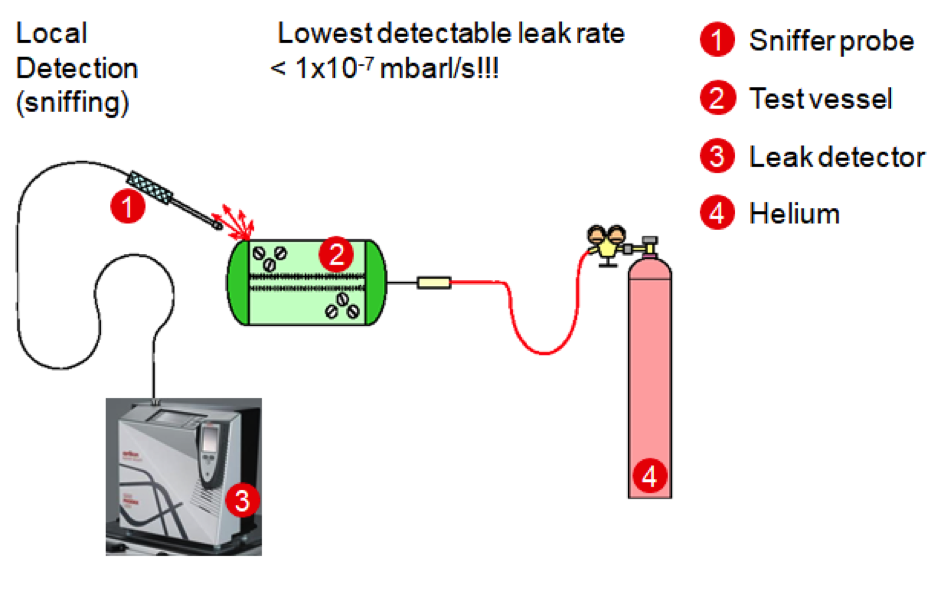

Two companies make gauges and in-line apparatus to test pressure differential air flow. When helium reaches the pic cable sections the movement in it is much faster (at a lower pressure.) But you won't know that if you are testing from the tank. cable, followed by pic insulated cable the helium flow will be slow regardless of pressure because the pulp resistance to airflow is much greater than PIC. EXAMPLE: If the first 1000' section of cable is pulp insulated 3600 pr.

Knowing what flow is leaving the tank is helpful, but without succinct cable makeup records, it may not be useful in determining the time required for helium to get to point B. Every telephone cable has a unique resistance to air flow based upon the manufacturing and many sections of cable in the same electrically connected cable run may be of different types. or 1cc is approximately 1mbar litre per second. For reference 1 cubic millimetre per second is approximately 1×10 -3 mbar.l.sec -1. Depending on the helium background, and the other variable aspects mentioned below, the signal may be insufficiently stable, and testing to a pass/fail set point may not be possible. The flow-rater instrument is lacking at best even for dry air flow measurement as the balls in the unit become worn over use. There are 2 basic techniques high vacuum testing which allows leak test thresholds to be set down as low as 1×10 -12 mbar.l.sec -1, or sniffing which is generally used for helium leaks down to 1×10 -6 mbar.l.sec -1. in the system design, calibration, and leak test process to reliably measure extremely small leaks. If you used 10% helium, 90% air, the sensitivity of the flow meter would not be much affected. You still use a helium sniffer, and because of the air, the sensitivity is reduced. Helium is expensive, and often a mix of air and helium is used as the medium. I don't think there would be a universal correction. It would depend on the model and how it senses. However, I don't know if the sensing mechanism would be proportional to density. If it is proportional to density, obviously Helium is much lighter, in the ratio 4/29. out of the particular class considered and to test the results. Thanks for your help.It would depend on the sensing mechanism. The beam is programmed so that particles launched late in time tend to catch up with. Is there a conversion factor or formula he could use with his air flow tool to find out the flow rate of helium into the cable? Problem is, he's using a tool calibrated to measure air flow rates in standard cubic feet per hour at 10 psi, not helium flow rates at 10 psi. My client wants to know the flow rate in SCFH of the helium that he is injecting into the cable. In order to find an air leak in a section of air pressurized cable, some phone techs inject helium into the cable and search for the escaping helium with a gas detector. As long as there is adequate air pressure inside a telephone cable (0.5 psi for every foot of water above the cable), the positive pressure will keep the conductor insulation dry. The nitrogen cylinder should be connected. So, this pressurized air is supplied continually to the cables from large air compressor/dehydrators. Leaks are detected using an electronic leak detector sensitive to either helium or hydrogen. Water causes electrical shorts, cross talk, and other conductor faults that screw up communications. Telephone companies force 10 psi of dry air into their direct-buried and underground cables (the ones that have copper conductor pairs, that is) as a means of keeping moisture out.
Helium test time calc plus#
What if I don’t want to rent a Helium Tank? If you need one-time use, portable, disposable Helium Tanks called our Yankee Doodle Dandy ™ E-Z Balloon Kit ™, please contact Creative Balloons Manufacturing at 1 (800) 538-5800 - we ship worldwide, plus they are recyclable after use.Here's the deal - my customer is trying to locate an air leak in a section of pressurized telephone cable. Typically, you can rent a standard 242 cubic foot Helium Tank from a local gas supplier, welding company or tank rental firm. Below are approximations, and actual results may vary based on many conditions (indoor/outdoor use, amount of direct sunlight, balloon type, helium or air mixture in your tank, etc). Use our Helium Balloon Chart to estimate how much Helium Gas is required to fill a Latex Balloon, Mylar Foil Balloon or multiple the output yourself to determine what’s required for that snazzy Balloon Bouquet Cluster you’re going to create. Not only does this helium balloon chart help you better plan for your up-coming Helium Tank needs, it also helps you calculate for your budget. Our simple and easy to use calculator helps you determine the estimated amount of Helium per Balloon and the Number of Helium Tanks you might need. Why we built this calculator just for you (yes you):


 0 kommentar(er)
0 kommentar(er)
